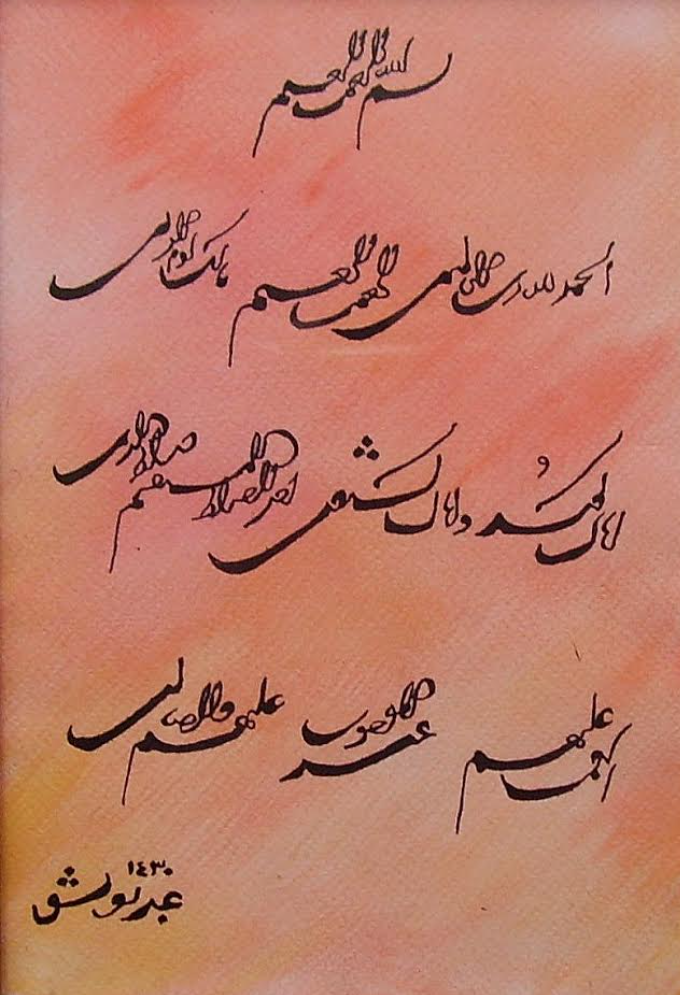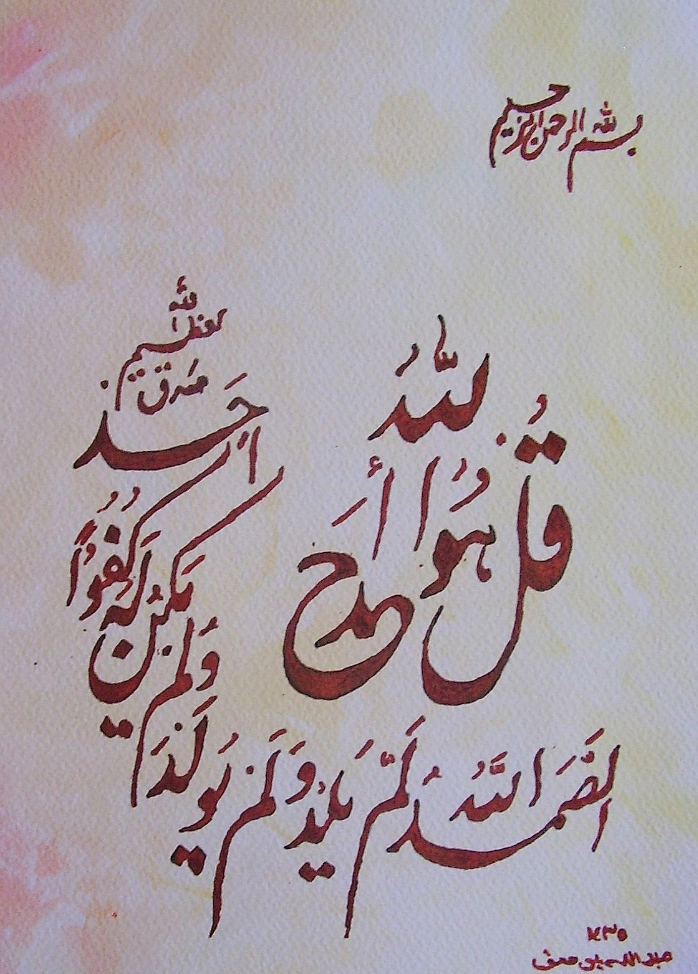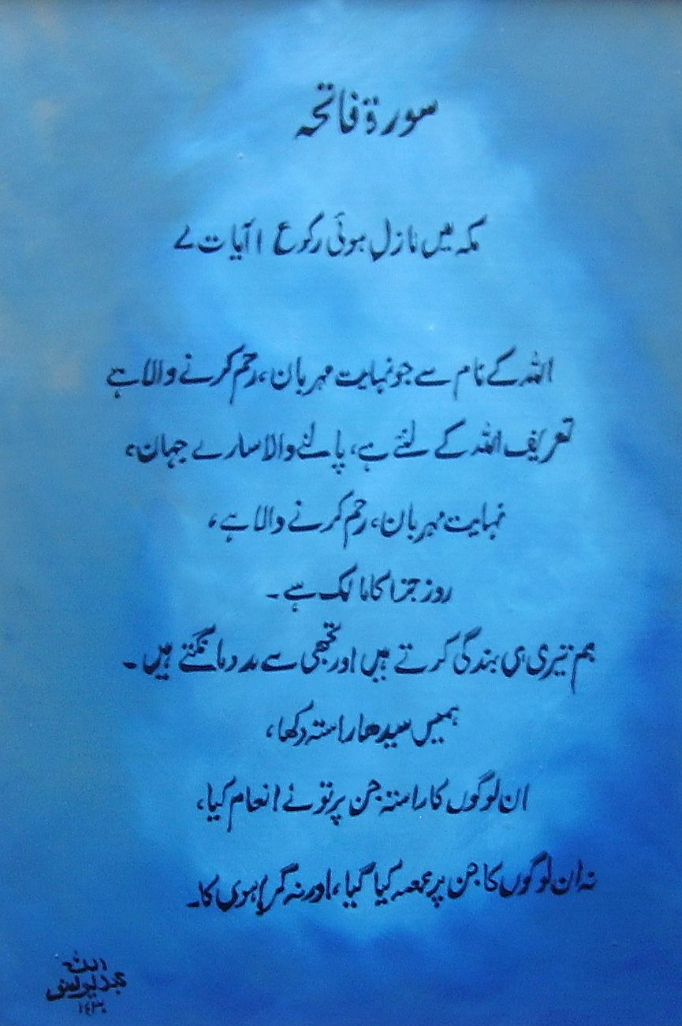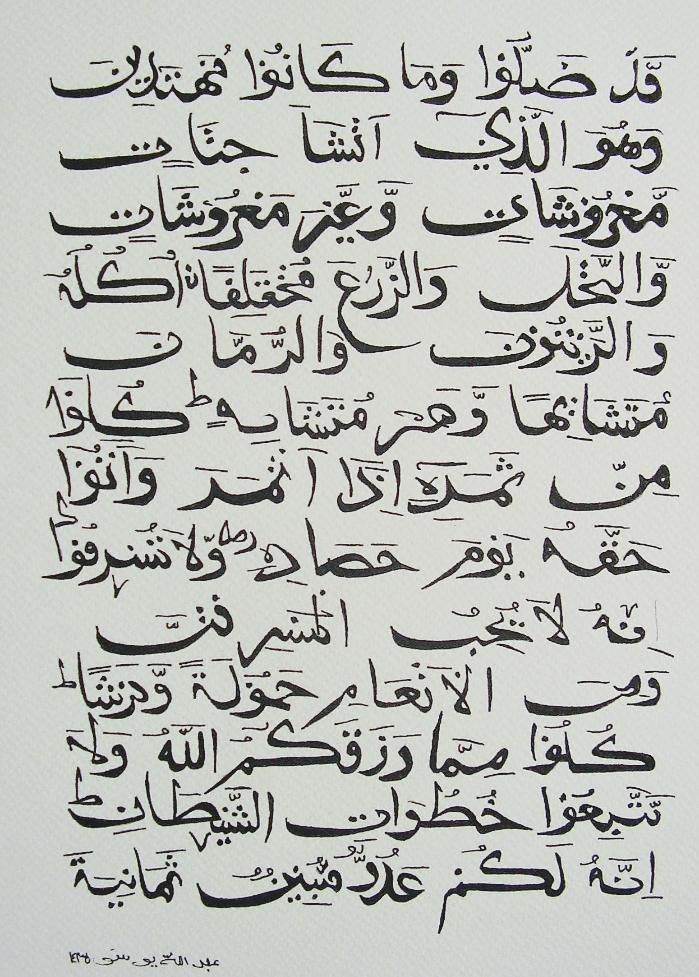Islamic Calligraphies Part 7 - Persian Types
Sikaste writing:
The word itself means broken in Persian. Because it was written in small, thin broken letters, it wasn’t exactly easy to read either, but it was the oldest Persian writing. It was used in everyday life, for writing letters, and is also common in good texts and talismans. It also had a great influence on some of the initial Arabic writing.
Well, let's look for a nice example of this writing too :) The Al-Fatiha Surah:

Taalík writing:
It was already a more sophisticated, clearer version of sikaste writing. It is characterized by its letters tilting strongly from right to left in the direction of writing, and the lines slide from top to bottom. It was not widely used to copy the Qur’an, but primarily to make documents in Persian.Here is an example of it, Al-Ikhlas surah in Taalik writing:

Nastaalík writing:
This writing appears in Persian book copies in the 9th century of the hijra, that is, from the 16th century onwards. As its name suggests, it is a descendant of Taalik writing. It was born from a mixture of Nehsi and Taalik writing. As a result of nastaalík writing, similar writing was used in Arabic, which was called (Farisi) or Persian.
Nastaalik writing has also become the national writing of Indian Muslims (Urdu).
Then let's look at an example of this, in the original Nastalian Persian script of the Al-Ikhlas Surah:

In the Urdu script and language (used in Pakistan today), the Al-Fatiha Surah:

Bahrain writing:
It is used in Afghanistan and parts of India as an improved version of Hebrew writing. Its characteristic is that its wide, heavy, long horizontal lines are in sharp contrast to its thin, fine vertical lines.
Here's a compelling example:

Sini writing:
Chinese Muslims use the writing forms used in Afghanistan. But in addition, a special style was developed, with which they first wrote on porcelain and ceramic objects. It was later adopted by calligraphy and named Sini (Chinese) writing.
Let's see a real gem, a Bismillah:

I would add to all this that the line does not end here, of course, but these are the main forms of writing. Here I would also like to point out the interesting fact that although most of these writings use Arabic writing, the language is variable. Depending on the area in which it was used, the main types of writing are Persian, but there are also Urdu, Afghan, Pashto, Dari, and Chinese.
Today I close my lines with this.
Allah bless you :)
Yusuf.


Add comment
Comments